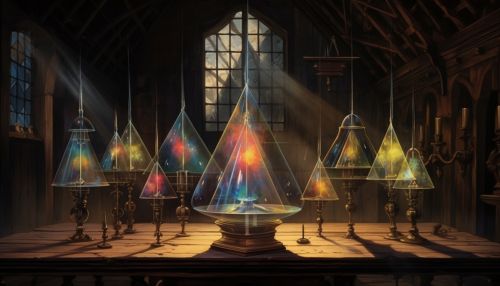Isaac Newton
Early Life
Isaac Newton was born on 25 December 1642 (Julian calendar), in Woolsthorpe, Lincolnshire, England. The son of a farmer who died three months before he was born, Newton was not expected to survive his first day of life, let alone 84 years. His mother, Hannah Ayscough, remarried when Newton was three and left him in the care of his maternal grandmother. This early period of abandonment and solitude had a profound impact on Newton, shaping a character that was introverted and solitary.
Education
Newton began his education at the King's School in Grantham. At the age of 12, he was pulled from school to work on the family farm, but he was so miserable there that his mother eventually allowed him to return to school. Newton's uncle, a graduate of the University of Cambridge, convinced his mother that Newton should prepare for the university. Newton entered Cambridge on 5 June 1661.
At Cambridge, Newton studied the standard curriculum but was fascinated with the advanced science. All his spare time was spent reading from the modern philosophers. The result was a less-than-stellar performance, but an experience that would shape his future path.
Mathematical Discoveries
Newton's work in mathematics began early. He made significant contributions to calculus, including the fundamental theorem of calculus. The 'method of fluxions', as he termed it, was based on his crucial insight that the integration of a function is merely the inverse procedure to differentiating it. Taking differentiation as the basic operation, Newton produced simple analytical methods that unified many separate techniques previously developed to solve apparently unrelated problems.
Optics
Newton also made seminal contributions to optics. His experiments demonstrated that white light is composed of the same system of colours that can be seen in a rainbow, and that each colour is made up of a single, unique type of light ray. These findings led to the formulation of Newton's theory of colour. From 1670 to 1672, he lectured on optics and investigated the refraction of light, demonstrating that a prism could decompose white light into a spectrum of colours, and that a lens and a second prism could recompose the multicoloured spectrum into white light.


Laws of Motion and Universal Gravitation
The publication of Mathematical Principles of Natural Philosophy marked a significant advancement for the field of physics. In this work, Newton formulated the laws of motion and universal gravitation that formed the dominant scientific viewpoint until it was superseded by the theory of relativity.
Newton's laws of motion are three physical laws that form the foundation for classical mechanics. They describe the relationship between the motion of an object and the forces acting on it. Newton's laws of motion were first compiled by Isaac Newton in his work Philosophiæ Naturalis Principia Mathematica (1687).
Later Life and Death
In his later life, Newton devoted much of his attention to alchemy and biblical chronology, but he also served as Warden and Master of the Royal Mint, as well as President of the Royal Society.
Newton died in his sleep in London on 20 March 1727 (Julian calendar; 31 March 1727 Gregorian calendar). He was buried in Westminster Abbey.
Legacy
Newton's work in the field of mathematics, optics, and physics are of fundamental importance to the science as we know it. His laws of motion and universal gravitation have been used for centuries to predict the behaviour of the physical world, and they remain excellent approximations at the scales and speeds of everyday life.
